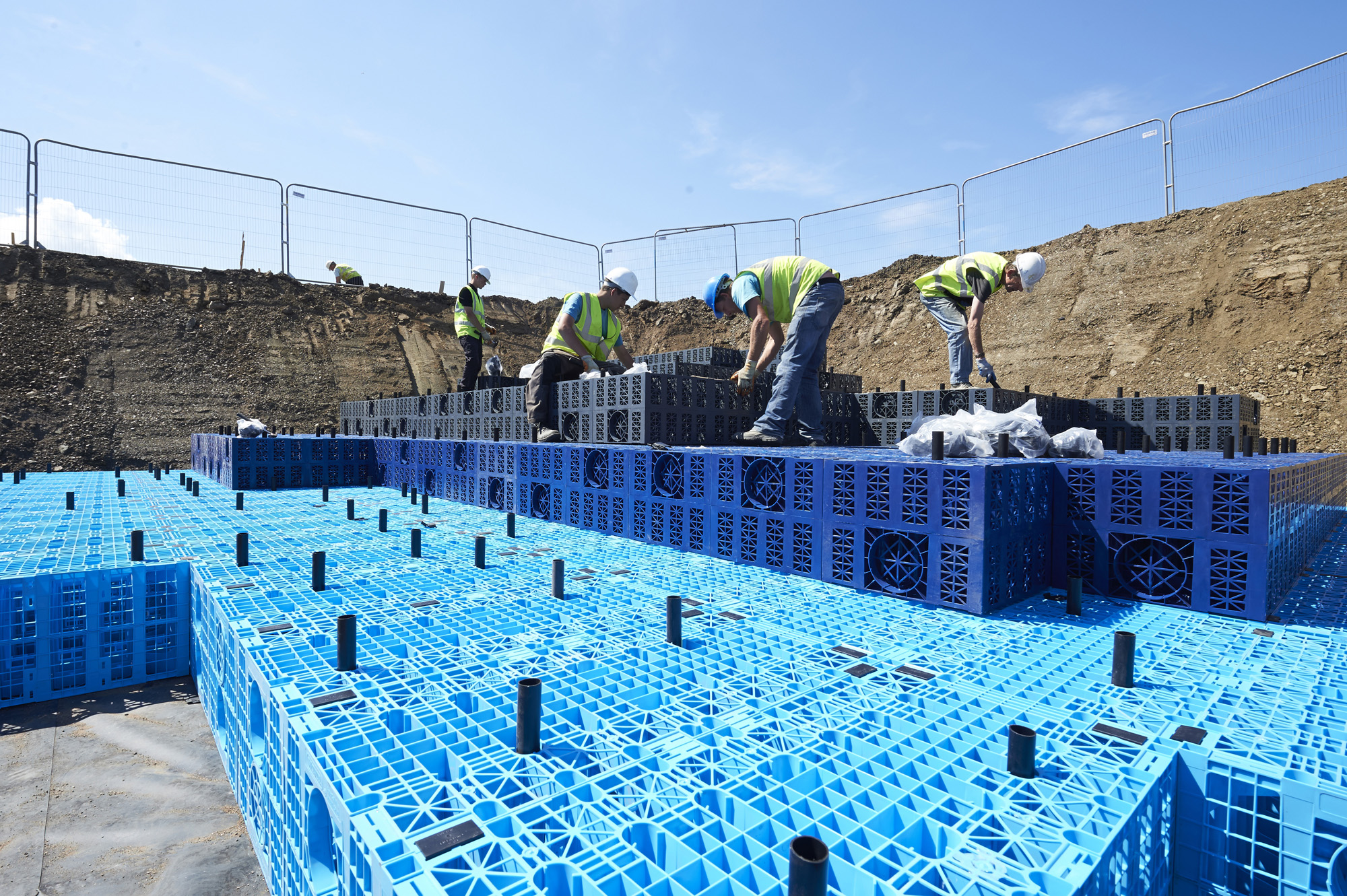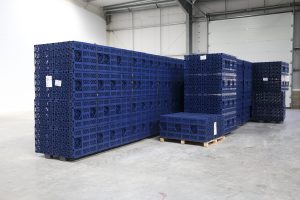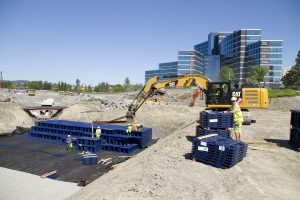
Martin Lambley, Product Manager for Foul, Utilities and Water Management at Wavin, explores how SuDS can help housebuilders mitigate the impact of flooding on new-build housing developments.
Over the last few years, a host of extreme weather events have placed the spotlight on the issue of flooding and its impact on homes. In 2016, for instance, floodwater in Cumbria inundated homes across the county, displacing hundreds of people for months while their properties were repaired and made habitable again. According to the Association of British Insurers (ABI), the cost of this damage to homes, in addition to local businesses and infrastructure, was an unbelievable £1.3bn.
With the costs of such extreme weather in mind, housing developers are increasingly placing an emphasis on how they design the drainage systems for new-build projects to ensure they are fit for purpose both now and into the future.

Urban growth
Over the last five decades, towns and cities across the UK have grown considerably. While this growth has helped us to accommodate the nation’s booming population, it has also led to there being less permeable ground – lawns, fields and woodland – in and around urban centres to absorb rainwater. The result is that during storms and extreme rainfall, there is nowhere for water to drain away to, increasing the risk of “pluvial” – or rain-related – flooding.
Traditional methods of handling excess stormwater are no longer viable as a means of protecting homes. This is because rather than lowering surface water levels, traditional approaches shift the problem elsewhere, causing communities further downstream to flood.
New solutions
Developers need to find new ways to manage stormwater on their developments. The solution lies in storing it away from homes until the extreme weather passes. This method minimises the impact of stormwater on the development as well as on surrounding areas.
“The solution lies not in removing the water from the site as quickly as possible, rather in storing it away from homes until the extreme weather passes.”
Sustainable Drainage Systems (SuDS) are a means of achieving this goal on new housing developments. These solutions mimic the drainage properties of the natural environment, absorbing and storing stormwater. They allow it to be released slowly back into the environment via infiltration and evaporation and, where permissible, controlled release into sewers and watercourses. When they are incorporated into the drainage systems surrounding a housing development, they can be a vital means of minimising the risk of flooding both onsite and further downstream.
Tread softly
The most common type of SuDS in the UK is known as a “soft” drainage system. Small zones of green space with drainage basins and swales collect and attenuate rainwater from the surrounding development. These not only hold back water for controlled release, but also provide habitats for local wildlife. However, the space they take up on the surface limits the land available for development.
Engineered approach
An alternative space-saving drainage solution that is often used is “engineered” SuDS. These involve purpose-built structures buried beneath a housing development that are able to store the same amount of water as a standard soft solution, without taking up any space on the surface.

The tanks are connected to the surface water collection systems, such as gutters, drains, channel drains and gullies, to collect rainwater as it falls. As they start to fill, the tanks release the stored water back into the surrounding soil through infiltration, or into the local drainage network at a slow, managed rate, typically via a flow-control device.
Engineered SuDS are increasingly common in the built environment across the UK, and there is a range of solutions available to help housebuilders meet specific design needs. For example, the Aquacell range from Wavin is suitable for housing developments, as it is capable of withstanding heavy loads from vehicles on the surface and is highly durable, minimising the need for maintenance. An individual Aquacell unit can store as much as 190l of water, and can be installed alongside others to form a geotechnical structure.
Wavin’s next-generation Q-Bic Plus range is also suitable for new-build developments, as its enhanced modularity offers greater design freedom. This gives engineers the opportunity to develop a SuDS with the ideal capacity to meet the requirements of the site above, regardless of its size or the number of houses. It also allows contractors to inspect the structure once installed, which helps to streamline the maintenance process.
Keeping homes high and dry
The risk of flooding is a serious problem that looks set to only get worse. With the effects of climate change, extreme storms are predicted to increase over the coming years. Taking this into account, developers need to search for new ways to ensure the homes they build are protected from floodwater.
Engineered SuDS are ideal for addressing this issue, offering a cost-effective and sustainable means of managing stormwater. By installing these systems onsite, developers can make sure they are playing a key part in helping to keep communities safe from flooding well into the future.
